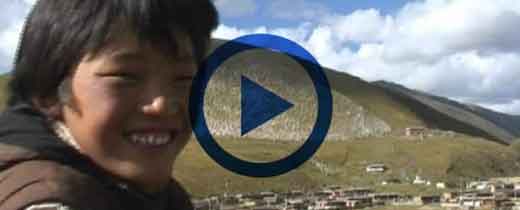Diqing Tibetan Autonomous Prefecture, referred to as Diqing Prefecture, is only Tibetan autonomous prefecture under jurisdiction of Yunnan Province. The capital of autonomous prefecture is located in Shangri-La City (traditionally known as Jiantang or Gyeltang in Tibetan). It is about 608 kilometers away from Kunming — provincial capital
Diqing means “Good luck and Good place”, and Shangri-La means “Sun and Moon in the heart” in Tibetan
Location
Diqing Prefecture is located in northwestern of Yunnan Province, at junction of Yunnan, Tibet and Sichuan provinces.
It is in hinterland of national-level scenic spots, Hengduan Mountains and three parallel rivers (Jinsha River, Lancang River, and Nu River), which are arranged longitudinally from north to south on extension of Qinghai-Tibet Plateau, Lancang River and Jinsha River run through its entire territory from north to south, with a total area of 23,870 square kilometers.
Diqing Prefecture borders Lijiang City to southeast, Nujiang Prefecture to southwest, Nyingchi City and Chamdo City of Tibet Autonomous Region to northwest, and Garze Prefecture and Liangshan Prefecture of Sichuan Province to northeast.
Diqing Prefecture was part of Kham in history, it was also historically an important town of “Ancient Tea Horse Trading Route“. It becomes a very attractive tourist attraction ever since it was regarded as of “Shangri-La” which is thought to be paradise that world has been seeking for a long time in legend.
Tourism
As of 2014, Diqing Prefecture has 299 cultural relics protection units, including 3 at national level and 13 at provincial level. Aancient city of Dukezong is a provincial-level historical and cultural city, Yezhi Town is a provincial-level historical and cultural town, Niru Village in Luoji Township, Tangdui Village in Nixi Township, Baidi Village in Sanba Township, Cizhong Village in Yanmen Township, and Yunling Township Yubeng Village is a provincial-level historical and cultural village.
Diqing prefecture has majestic Meili Snow Mountain (Kawagebo), the first peak in Yunnan; The steepest canyon in world, Tiger Leaping Gorge; birthplace of Dongba culture, “Xianren Yitian” Baishuitai; and the lowest latitude in China, The modern glaciers of Mingyong glacier; Ganden Sumtsenling Monastery; Pudacuo National Park, Three Parallel Rivers Scenic Area; Haba Snow Mountain, Baima Snow Mountain, Bita hai lake, Napa hai lake, Shudu Lake, Dongzhulin Temple, Xiaozhongdian Grassland, Moon Bay Grand Canyon, Shouguo Temple, Cizhong Catholic Church, Feilai Temple…etc,
Administrative divisions
Diqing Prefecture has jurisdiction over 1 county-level city, 1 county, and 1 autonomous county.
County-level city
County
Autonomous County
Geography and climate
Terrain of Diqing Prefecture is high in north and low in south, and its territory is “three mountains with two rivers”. The three mountains are Meili Snow Mountain, Yunling Snow Mountain, and Zhongdian Snow Mountain, which are arranged in sequence from west to east. The highest elevation is 6740 meters from Kawagebo Peak of Meili Snow Mountain, and the lowest elevation is 1486 meters at “mouth” of Biyu River into Lancang River in Weixi County. Due to influence of topography and climatic factors, three types of ecological environments are formed vertically, including Alpine regions: altitudes of 2800-6740 meters; mountainous areas: altitudes of 2200-2800 meters; valley areas: altitudes of 1486-2200 meters.
In Diqing Prefecture, there are Lancang River and Jinsha River running through whole territory from north to south. Jinsha River flows through Diqing for 430 kilometers, with a drainage area of 1,6810 square kilometers. Lancang River flows through Diqing prefecture for 320 kilometers with a drainage area of 7059 square kilometers. There are 221 large and small tributaries, distributed along this two rivers, forming a typical plume water system.
Climate in Diqing Tibetan Autonomous Prefecture is a temperate-cold-temperate climate, with an annual average temperature of 4.7°C-16.5°C, an annual extreme maximum temperature of 25.1°C, and a minimum temperature of -27.4°C. The three-dimensional climate is obvious, and there is a saying that “a mountain is divided into four seasons, and ten miles have different days.”
Population and ethnic groups
As of end of 2018, total population of Diqing Prefecture was 414,000. Han population accounts for 11% of total population; ethnic grops account for 89% of total population. Among them: Tibetan population accounts for 36% of total population; Lisu population accounts for 30% of total population; Naxi population accounts for 13% of total population.
As of end of 2018, there are 5 ethnic groups with more than 1,000 people in Diqing Tibetan Autonomous Prefecture, namely: Yi, Bai, Pumi, Miao, Hui
Brief History
In Han Dynasty, Diqing area was namod area.
In Jin Dynasty, Diqing area belonged to Maergan regime
In Sui Dynasty, it belonged to Nanning Prefecture and part of it belonged Tubo kingdom
In early Tang Dynasty, Diqing area belonged to Tubo kingdom
At end of Southern Song Dynasty, Mongolian army conquered Dali kingdom, Diqing area became part of Mogol land
At beginning of Yuan Dynasty, Diqing area was under jusridiction of Lijiang
In 5th year of Emperor Yongzheng of Qing Dynasty (AD 1727), Weixi County was set up
In 21st year of Emperor Qianlong of Qing Dynasty (AD 1756), Zhongdian (Gyeltang) county was established
In 27th year of Republic of China (AD 1938), Diqing area was under jusridiction of Yunnan
In 1951, Deqin Tibetan Autonomous Region was established
In 1955, Deqin Tibetan Autonomous Region was changed to Deqin Tibetan Autonomous County
In 1956, establishment of Diqing Tibetan Autonomous Prefecture was approved
In 1957, Diqing Tibetan Autonomous Prefecture was formally established, with jurisdiction over 3 counties, Zhongdian, Weixi, and Deqin
In 1985, Weixi County was changed to Weixi Su Su Autonomous County
In 2001, Zhongdian County was renamed Shangri-La County
In 2014, Shangri-La County was abolished, and Shangri-La City was established




